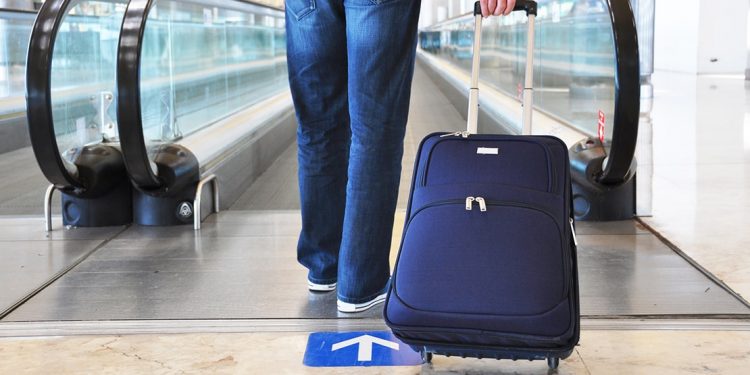
How to Travel With a Smaller Eco Footprint
The American transportation sector is responsible for about 40% of the country’s fossil fuel-related carbon dioxide emissions — reducing our collective transportation footprint could dramatically lower the amount of CO2 emitted into the atmosphere.
Fortunately, if you love to travel but are concerned about the impact it has on our planet, it’s not only possible, but fairly easy, to keep the environment in mind while still enjoying the passion you have for seeing the world.
Start your journey to becoming a more eco-conscious traveler today!
Lighten Your Load
Packing lighter not only makes getting around easier, it reduces an airplane’s carbon emissions too. Carefully consider each item you bring — do you really need those extra pair of shoes that add an additional couple pounds?
And what about all of those heavy books, why not download them instead? If you have a tough time lightening your load, consider buying a smaller suitcase that makes it impossible to over pack.
You should also consider the type of clothing you bring. Packing light in the fall and winter can be especially challenging!
Clothes made out of merino wool are super-lightweight, but they’ll keep you warm in chilly weather and cool when it’s warm out. You can also wear it longer without it starting to smell.
Just those simple changes in how you pack can have a significant impact on the environmental impact — in fact, they say that leaving those two-pound pair of shoes at home is like removing over 10,000 cars from the road for an entire year.
Keep the Window Shades Down
Have you ever wondered why they ask you to lower the window shade on the plane? It’s because it helps keep the aircraft cooler, lessening what it takes to keep it cool. That ultimately saves energy while lowering greenhouse gas emissions, too.
If you are having some serious travel withdrawal, one of the easiest (and cheapest) fixes is getting lost in one of these incredible travel novels.
Book Eco-Friendly Hotels
These days, there are a wealth of hotels and other accommodation options that are “green,” minimizing the negative impact on the surrounding land, while ensuring an outstanding customer experience at the same time.
Booking a room at one of them can have a huge impact, and even make travel more fun with the many unique eco-conscious places available. How does a sustainable wooden tree house sound? Or an ultra-fancy hotel with exteriors that maximize natural light, reducing the need for electricity?
Simply by doing a few minutes’ research you’re sure to find the one that’s right for you. If you aren’t sure where to start, you can locate a list of global options at the Global Sustainable Tourism Council.
Utilize Eco-Conscious Forms of Transportation
Once you arrive, the form of transportation you use can also make a big difference. Whenever you can, choose more sustainable ways of getting around, such as biking or walking instead of renting a car.
It’s also a great way to squeeze exercise into your vacation and to see sights you normally wouldn’t from behind the wheel. Depending on what you are looking for, you can use biking as a means for getting from one place to another, or you can even go on specific cycling tours.
If walking or biking isn’t an option due to the distance, taking the train or bus is a much better way to get around, environmentally speaking, than driving yourself.
Buy Local
Just as you should at home, try to buy local whenever you can. This includes purchasing locally made souvenirs, rather than shopping at stores where just about everything is made in China, unless you’re in China, of course!
But it’s not just souvenirs; try to buy in-season foods and dine at restaurants focused on serving dishes using more local ingredients, too.
It not only adds to the overall experience, but you’ll help conserve valuable resources by not purchasing items that had to be transported from hundreds of miles away.
Traveling in a big group has a lot of perks, but the planning process can be challenging. Here's how to organize a trip for a group while staying sane!
Respect Fragile Landscapes
Most eco-conscious travelers would never even think about leaving trash or marking up sights, but there is more to respecting fragile landscapes like a rainforest, tundra or wetlands than you think.
If you plan to camp, be sure to use designated sites if they exist, and always stay on the trail in order to do your part to maintain the beauty of the area for future visitors.
Heed warnings and other information on signs posted. They’re there for a reason and apply to everyone.
A big one is not using drones in national parks. Many people feel it’s not a big deal to break this rule; but if everyone does so, it will certainly have a negative impact on the wildlife in the area.
Offsetting Your Carbon Footprint
Offsetting your carbon footprint basically means compensating for the carbon dioxide pollution that you’re making by preventing the same amount of pollution from happening somewhere else.
For example, you could offset your carbon footprint by doing good work for the environment yourself, such as planting trees on land you own, or by making a donation to an environmental organization.
The point of carbon offsetting is to match the “carbon damage” done in one spot with “carbon repair” in another, so be sure that you’re getting lots of benefit out of whatever it is that you’re doing to balance out harmful environmental impacts.
